Spring Foraging
“Romie Lane was muddy with pools of water standing in the new wheel ruts, and the tall wild oats and mustard grew beside the road, with wild turnip forcing its boisterous way up and stickery beads of purple thistles rising above the green riot of the wet spring.”
East of Eden, John Steinbeck
Inspiration
Early spring is an astonishing time to forage along the coast of California. Every patch of soil that was graced with winter rain has sprouted new shoots with tender blossoms floating on a sea of green leaves. Joy Colangelo gave Athena and me an introductory plant foraging lesson in Monterey. Joy is a co-owner of Monterey Bay Sea Salt and has been foraging for almost thirty years. Her knowledge of plant foraging is focused on survival skills. Not only what can be eaten to survive, but what plants can be used as shelter or even to supplement clothing to keep warm. It is the ultimate serendipity to find what you need right where you are! Time spent with Joy is inspiration to spend time learning more about the planet we inhabit.
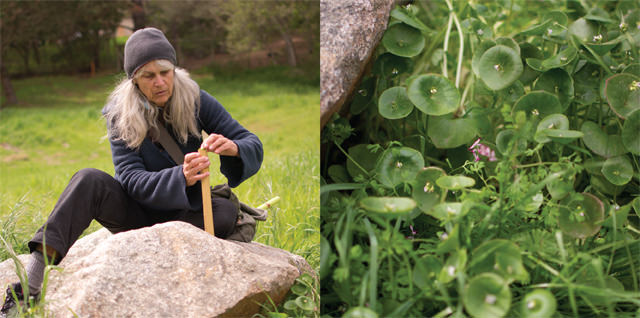
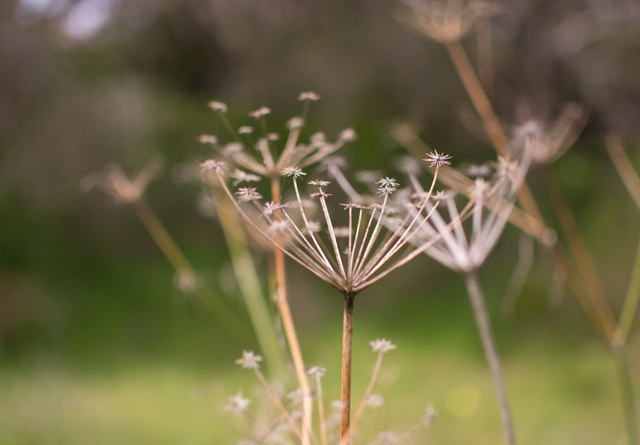
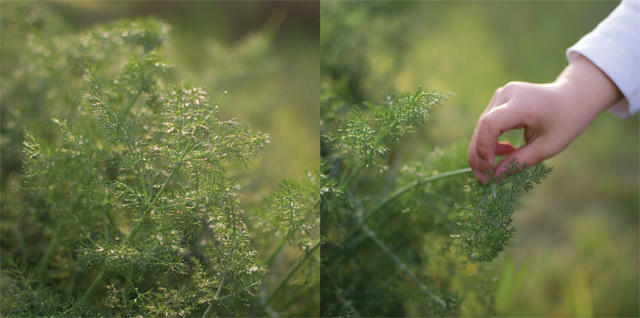
We literally walked across the street from where we parked our cars to learn that the location of our plant foraging session had over twenty edible foods. I was amazed to see Miner’s Lettuce, Wild Radish, Wild Anise, the nutritious purslane, sorrel, and Scotch Broom. We learned to identify poisonous hemlock with fronds similar to wild carrot and parsnip. Smitten with the delicate lavender blossoms of the Wild Radish I later foraged a few blossoms to pair with my Goat Cheese Biscuits.
Essentials
Working butter into flour by hand is a tactile pleasure that never fails to delight. A surprising alchemy occurs when goat cheese is added to the dough. The feather light biscuits have fluffy white clouds of tangy goat cheese hiding inside. If you can find Wild Radish growing in an area free of pollution from car exhaust and with a clean water source they can be added to the top of the biscuits. The blossoms are very delicate to handle. They have a barely there taste of radish which pairs very nicely with the tangy goat cheese, buttermilk and zesty sage. A sprinkle of flaky Monterey Bay Sea Salt imparts a crisp clean finish to these tender biscuits.
Flaky, light Biscuits are easy to make. The critical step is how the dough is treated once the liquid is added to the dry ingredients. I don’t use a spoon to mix in the liquid; I use a flexible dough and bowl scraper. Using the scraper with a lifting and rolling motion to mix the liquid and dry ingredients until they are almost combined results in a biscuit with a soft and flaky texture. I scrape the dough out of the bowl and unto my floured work surface. With just a few gentle kneading motions the dough comes together in a cohesive ball. With a quick roll and cut into shapes the biscuits are ready for the oven.
| Ingredients | |
| 1 | egg |
| 2-1/2C | all purpose flour |
| 1T | baking powder |
| 1t | salt |
| 1t | sugar |
| 1/2C | cold unsalted butter |
| 1C/8oz | goat cheese |
| 1C | buttermilk |
| 24 | fresh sage leaves (optional) |
| 36 | fresh Wild Radish flowers or other edible flowers (optional) |
| 1T | large flake sea salt (optional) |
- Line a sheet pan with parchment, set aside. Heat the oven to 425°. In a small bowl whisk together the egg and 1T water, set aside.
- In a medium sized bowl sift or shake through a sieve the flour, baking powder, salt and sugar. Cut the cold butter into cubes and add to the flour mixture. Using your fingers or a pastry cutter work the butter into the flour. Combine until the butter is coated with flour and resembles large crumbs. Add the goat cheese and using your fingers or a pastry cutter work the cheese into the flour. Leave the goat cheese in chunks. Some chunks should be larger, roughly the size of a nickel.
- Add the buttermilk mixture to the bowl with the flour mixture. Gently mix to combine, just until the dough comes together. Do not over mix. Place the dough on a lightly floured surface and using your hands gently form the dough into a flattened ball shape. With a flour dusted rolling pin or your hands gently flatten the dough into a circle that is 1″ high. To make twelve biscuits use a floured 3″ in diameter pastry cutter. Cut out the biscuits by pressing straight down, without twisting the cutter. Place them on the parchment covered sheet pan. Gently reform the scraps to make more biscuits.
- Gently brush the tops of the biscuits with the egg mixture. Press two or three flowers onto the tops of the biscuits and one or two sage leaves. Place the flowers and sage close together as the top of the biscuits will spread during baking. (The sage can be dipped in the egg mixture if it does not adhere to the biscuit top.) Sprinkle the tops of the biscuits with sea salt. Bake for 15–20 minutes until the biscuits are fluffy golden brown and voluptuous with goat cheese.
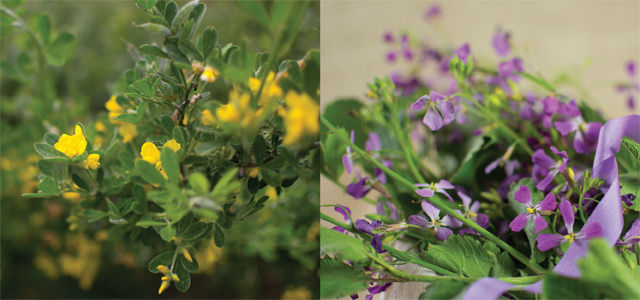
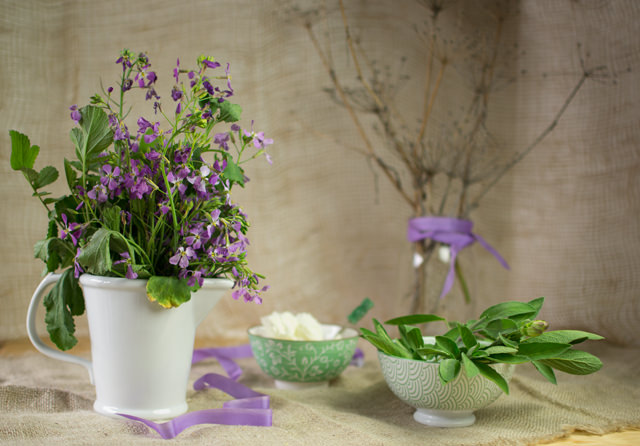
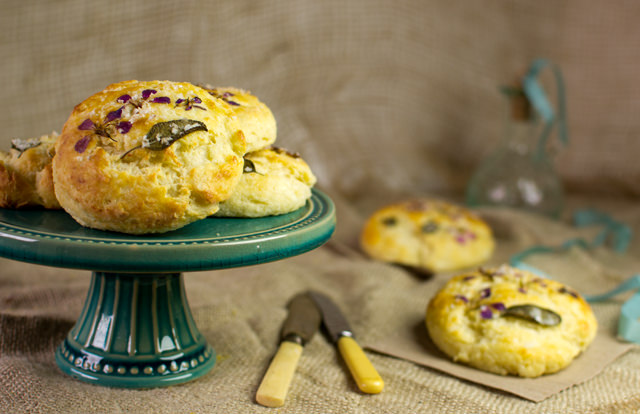
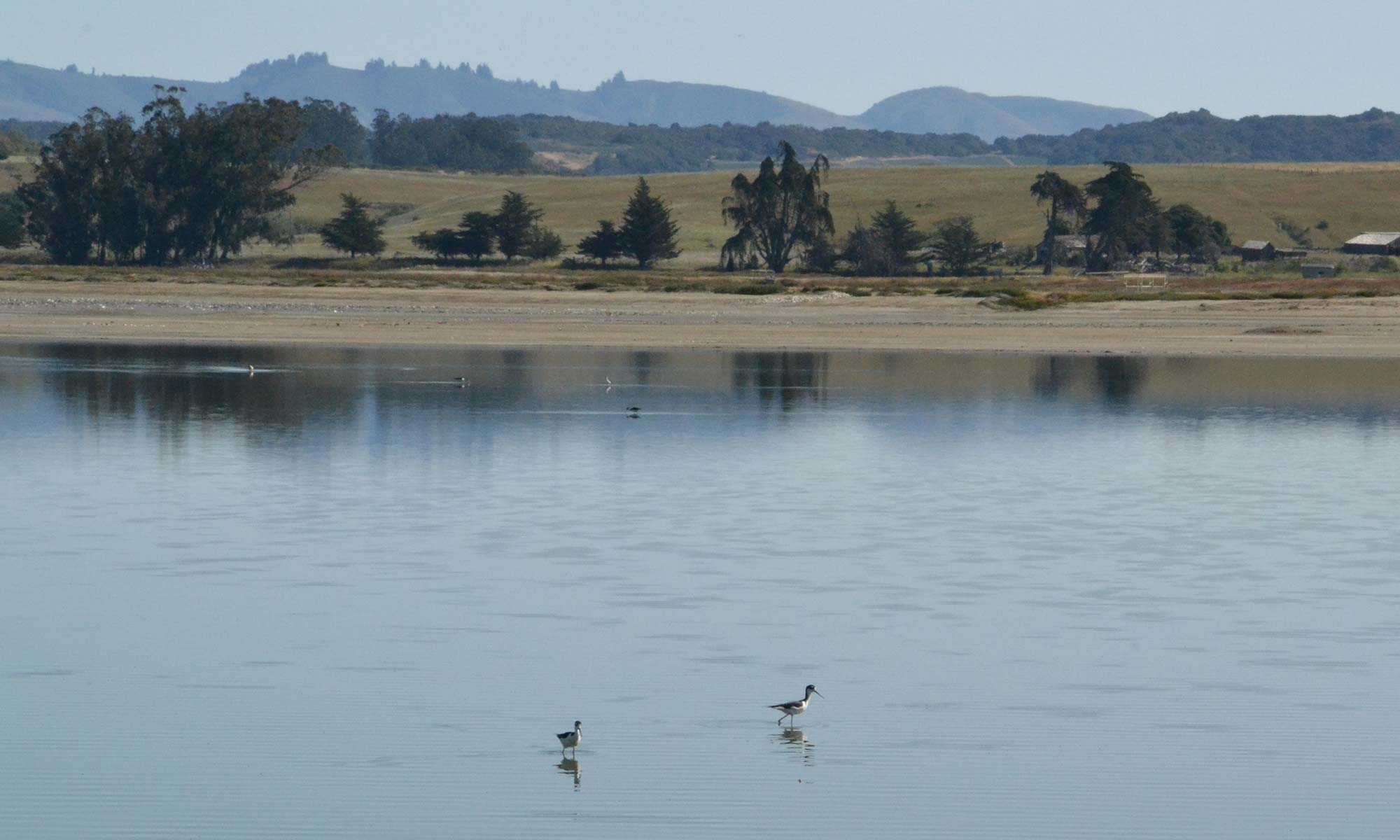
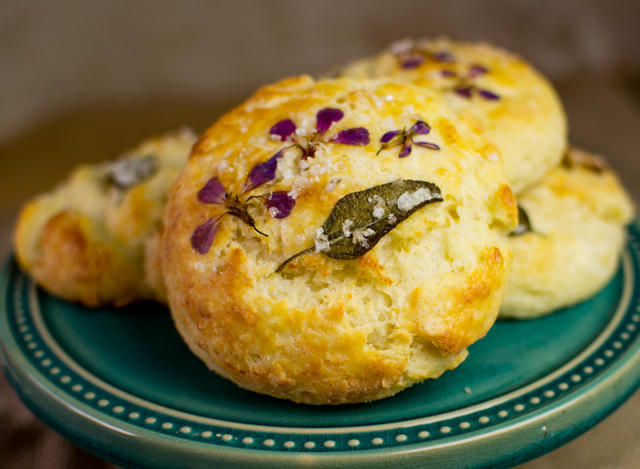
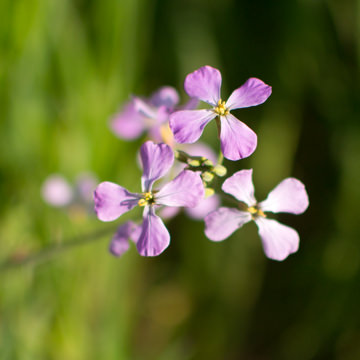
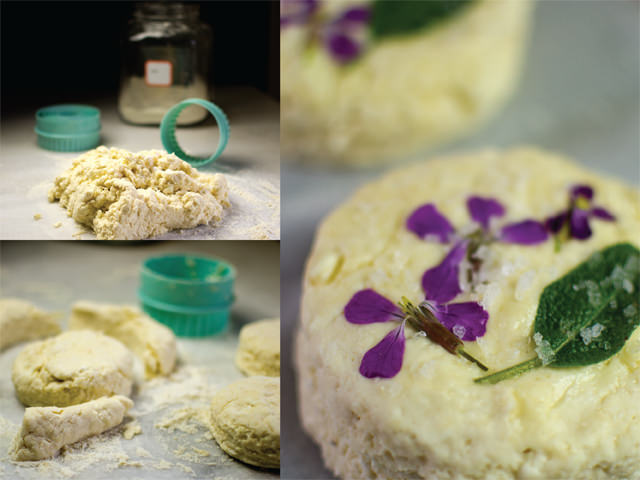
You make my heart bloom and sing. But then pretty always does it – these are stunning!
Thank you very much for your kind words!
Deb, these biscuits are gorgeous- and they look delicious!
Thank you for the tasty comment Viviane!
So, so pretty! Decorated by Mother Nature too 😀 And your tips for light and flaky biscuits are super
Thank you Kellie!
These are gorgeous! They’re works of art, and I’m sure incredibly delicious, too.
Thank you for the scrumptious comment Valentina!
How unique and delicate these look. And what a concept…foraging for everything we need, even clothing. I am usually rather happy with myself that I am recycling, buying local, organic and mostly sustainable. People like her blow me away and make me inspired to be better and shoot for more (and less really). Just fabulously gorgeous and delicious looking biscuits!
Thank you for the tasty comment Geni! Joy knows so much about plant foraging, it is a treat to learn from her.
So beautiful! I love the colors and flavors. It’s amazing how much wild fennel grows around here; I often smell while I am running. Now I just need a lesson to spot the hemlock…
Thank you for commenting Lynda! Yes the hemlock is scary! The anise and fennel have wispy fronds and the unique smell.
Deb: What gorgeous, mouth-watering goat cheese biscuits!!! Their presentation and photos are just lovely…
Thank you so much for your scrumptious comment Denise!
I’ve never heard of wild radishes. The blossoms look perfect for using in your biscuits. What a great idea for bringing a taste of spring to the table!
Thank you for the delicious comment Gretchen!
These look both beautiful and delicious. I love using flowers and wild plants in cooking, but the idea of putting them on top of scones/biscuits is new for me and I will certainly try it! Thanks!
Thank you for your tasty comment Cathy! The blossoms are great fun to cook with!
So enticing Deb – both foraging for edibles and your goat cheese biscuits. I have never heard of Wild Radish but I would love to try it. Sounds intriguing. Your photographs are so beautiful and vivid with the bright colors of spring flowers.
Thank you for your delicious comment Mary! I’m a beginner at plant foraging and have much to learn. Once I learned to spot the Wild Radish I found it growing everywhere! It is commonly thought of as a weed and easy to ignore. I was captivated by the dainty lavender blossoms (although I have also found blossoms in white & yellow) and wanted to share their beauty.
One of those posts you wish you could eat with your eyes! (and I’m not even the biggest fan of goat cheese believe it or not). Gorgeous Deb, and I’d even love a bite.
The biscuits are so easy to make! I’ll bring you some when we finally get to meet! Thank you for the very lovely comment Orly!
Mmm… biscuit and scone baking is one of my favorite things to do in the kitchen. Such lovely goat cheese biscuits you made Deb! The idea of vegetable flowers in cooking is wonderful. I try to get some whenever I can.
Thank you for the delicious comment Paula!
I wonder if there’s much to forage in the wild here given our hot, dry summers. I’d like to learn more about what we do have. The radish flowers and sage leaves look great on these biscuits! They’re all dressed up for spring.
We are currently in the beginning of our short lived wildflower season. Then there will be seed pods and roots to forage as California typically will get no more rain until November. I imagine the wildflower season in Texas would yield some astonishing foraging opportunities. Thank you commenting Lisa!
These are the prettiest biscuits, Deb! Love the wild flowers and sage!
Thank you for your tasty comment Laura! The sage and Wild Radish flowers pair very nicely with the tangy goat cheese.
Beautiful and so clever!
Thank you for your lovely comment Carol!